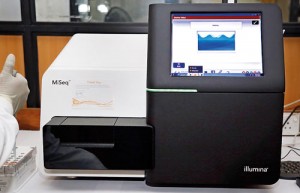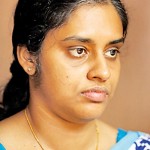News
Humble native rice shoots to fame
While the hybrids are much sought-after, it is a humble but hardy ‘native’ which has been skyrocketed to fame in Sri Lanka.
‘Goda Wee’, an indigenous variety of rice, will go down in the annals of science as the very first plant in Sri Lanka to get its genome (see graphic) determined by a local team of scientists in a local laboratory within the country. This will open up new vistas of possibilities not only in the science and technology fields but also in commercial activity.
This major feat of national importance has been achieved in a not-too-conspicuous section of a beautiful old building in the sprawling premises of the Medical Faculty of the University of Colombo down Kynsey Road – the Human Genetics Unit (HGU), with the support of John Keells Research (JKR) of John Keells Holdings PLC. The Rice Research and Development Institute (RRDI) at Batalagoda, meanwhile, had provided the ‘Goda Wee’ plants.
With much interaction among these three institutions since October 2014, it was in January that ‘Goda Wee’ was picked out to undergo full genome sequencing, the Sunday Times learns, for it was a salt-tolerant rice variety.
With the RRDI growing the plants and providing the tender seedlings, the HGU team got to work in earnest, extracting the DNA (deoxyribonucleic acid) and then subjecting it to a procedure called ‘Library Preparation’. Next they loaded it to the only genome sequencing machine in the country at the HGU.
“In a 55-hour marathon, the Next Generation Sequencing machine then took over and performed the sequencing,” explains HGU Director Prof. Vajira H.W. Dissanayake who is also a member of the National Biotechnology Council of the Coordinating Secretariat for Science, Technology and Innovation (COSTI) and the Biotechnology Committee of the National Science Foundation (NSF).

The genome sequencing machine. Pix by M.A. Pushpa Kumara
The ‘yield’ was a mind-boggling 18,000 mega base pairs of DNA sequence as data. This figure needs to be multiplied by a million to come to grips with the vast magnitude of data that has been generated, it is understood.
“We then aligned all the sequences and constructed the genome,” says Prof. Dissanayake, reiterating that it was not the end of the project.
Currently these large amounts of data are being analysed using bioinformatics tools to make new discoveries which would feed innovation, the Sunday Times learns.
Giving the backdrop of the ‘Goda Wee’ Project, Prof. Dissanayake says that last year JKR approached HGU for collaboration, with the idea of improving plants using genetic technology for the benefit of the people.

Prof. Vajira H.W. Dissanayake
Setting up the Synthetic Biology Team under his able direction, as a university-industry partnership, Prof. Dissanayake as the Principal Investigator then scouted for talent, selecting Lead Scientist Dr. Sanjeewa Singhabahu; Scientist Dilini Gunawardana; and Bioinformatician Chathura Wijesinghe.

Scientist Dilini Gunawardana
The first challenge, thereafter, was finding accurate information on the genomes of various plants. “There was a lot of information generated in other countries but that was patented and we couldn’t access it. Even when we sought to buy the licences, there was no response,” points out Prof. Dissanayake.
To do the work they wished to embark on, the genomes of plants were vital. It was then that the team decided to go back to basics and looked at some of the Sri Lankan plants sequenced by the International Rice Research Institute (IRRI) in the Philippines.
However, the next glitch appeared then, for the quality of the data available from the IRRI was poor.
The team then felt that their work was clearly cut out for them – the necessity was to do the genomic sequencing themselves, to generate good quality data.

Lead Scientist Dr. Sanjeewa Singhabahu
“Until then innovation would be impossible,” stresses Prof. Dissanayake, for they had to identify what genes in plants are important in withstanding environmental stressors such as droughts and salinity.

Bioinformatician Chathura Wijesinghe
So they did the full genome sequencing of ‘Goda Wee’ to determine what traits this survivor in harsh conditions had, it is learnt.
“This proves the ability of Sri Lankan scientists to carry out ground-breaking research which can contribute to national development,” said JKR Head Dr. Muditha D. Senarath Yapa, commending the team. “JKR is proud to be a part of this nationally-important milestone which opens the door to many futuristic commercial applications.”
While the team from JKR also comprised R&D Scientist Madushani Kannangara, the Batalagoda RRDI support came from Dr. Kapilasiri Udawela under the direction of Director Dr. Amitha Bentota.
| HGU extends its expertise The future is crystal clear. The Human Genetics Unit (HGU) is hoping to collaborate with the Rice Research and Development Institute at Batalagoda to sequence other commercially-important rice varieties, while also extending this coverage to all commercially-important plants in Sri anka, said Prof. Vajira Dissanayake. The other goal is to create a National Repository of sequenced data on plants which can be used by the entire research community spread across the country to make new discoveries, the Sunday Times learns. “Then we can conserve the biodiversity within Sri Lanka while also being able to prove through sequencing the origins of plants which have been patented elsewhere. This would enable us to re-claim our lost ownership,” he said. The facilities at the HGU are not limited to the gene-sequencing of humans but also cover animals, plants and micro-organisms, said Prof. Dissanayake, explaining that anything with DNA can undergo testing here. It has been an upward march for the HGU since it was established more than 30 years ago in 1983 by Prof. Rohan Jayasekara who was a visionary with regard to genetic technology in Sri Lanka. The latest addition, in August 2014, which enabled the whole genome sequencing of ‘Goda Wee’ is the Illumina Next Generation Sequencer installed not only with self-generated funds of the HGU but also immense support from the University Grants Commission. On the trail of stress-resistant, insecticide-resistant or parasite-resistant genes Having crossed the threshold of whole genome sequencing of ‘Goda Wee’, there is a quiet but tangible excitement among HGU’s Synthetic Biology Team members. They will be on the trail of stress-resistant, insecticide-resistant or parasite-resistant genes, which in turn will lead to better and higher productivity, as well as medically-important genes, said Lead Scientist Dr. Sanjeewa Singhabahu. Envisioning gene-sequence-assisted breeding, he cited the example of a drought-resistant gene which may be inactive or dormant that this technology could activate by ‘targeted genome editing’. Another case he brought to the fore was a variety of rice people may like to eat but is not salt-resistant. Nature may bring out the salt-resistance after a long period of time but this technology could carry out the ‘switching on’ of useful genes quicker and ‘switching off’ of other genes which may not be that good. It was Scientist Dilini Gunawardana who carried out the sensitive task of DNA extraction, by ensuring that each step was done thoroughly to ensure quality DNA. Meanwhile, Bioinformatician Chathura Wijesinghe with his mix of knowledge of computers and molecular biology analysed the data to bring about meaningful results. He achieved his target by running multiple programmes which are open sourced and free, using his knowledge of molecular biology and bioinformatics. |

